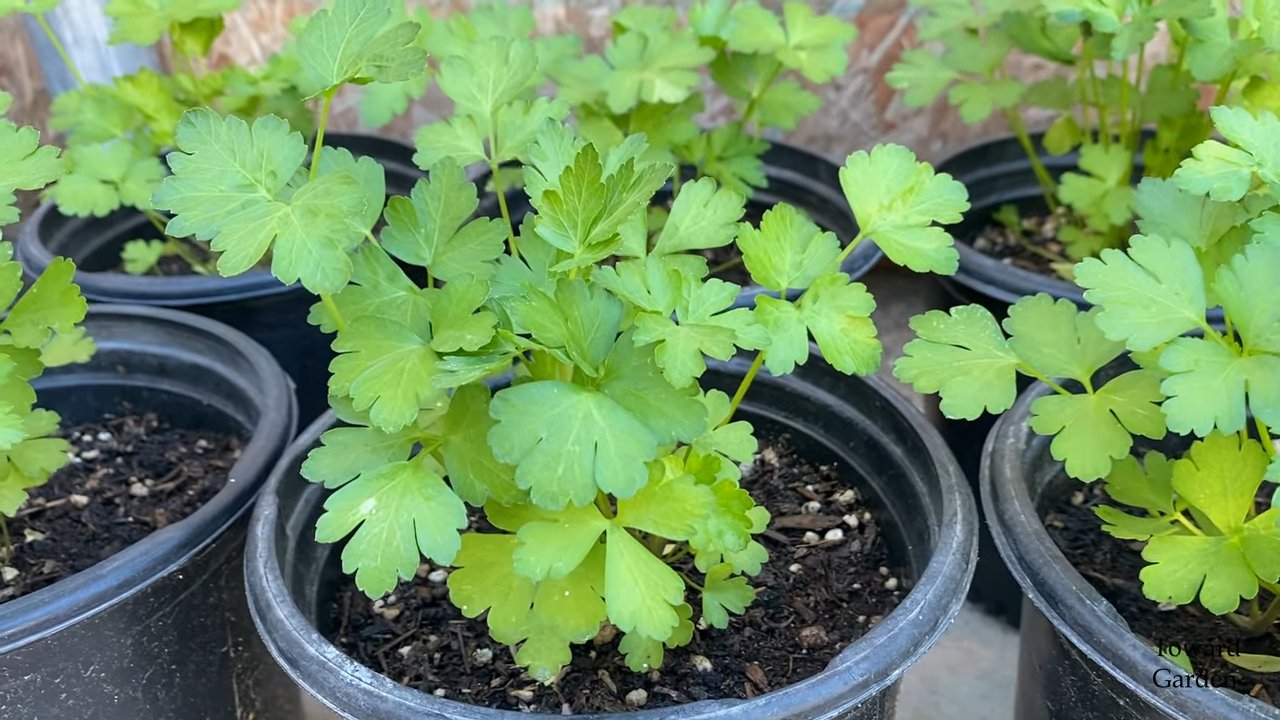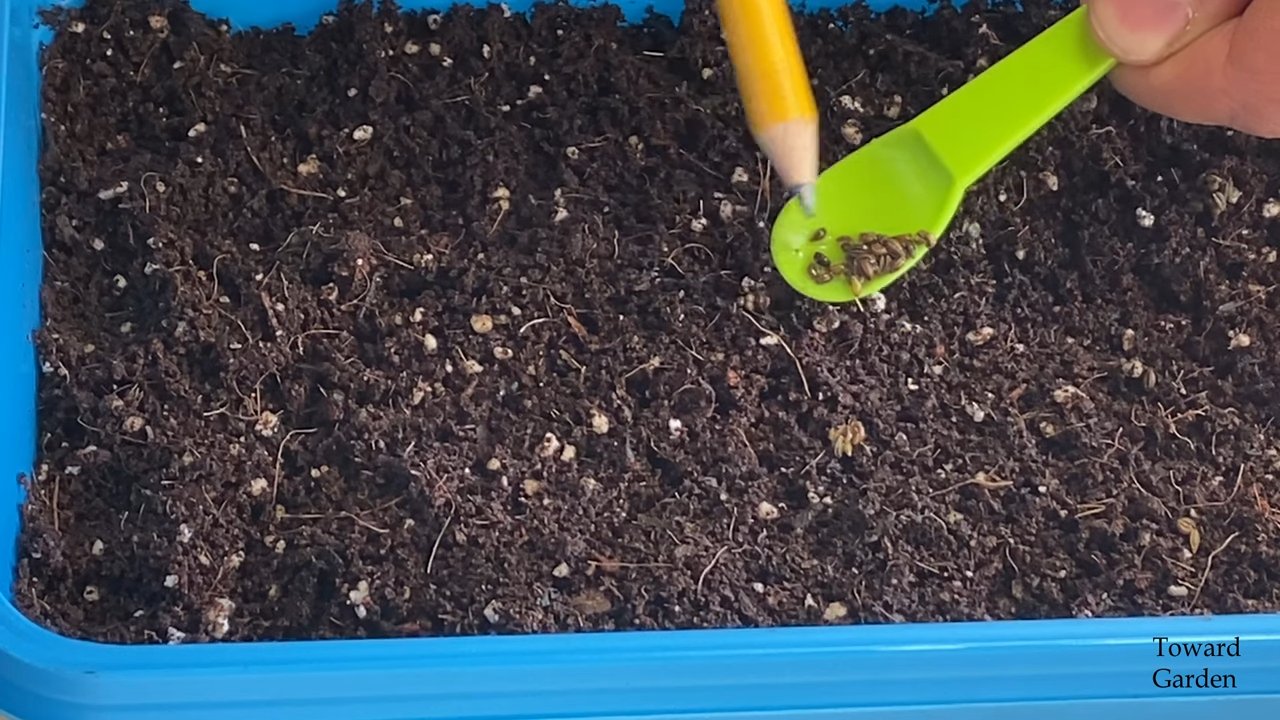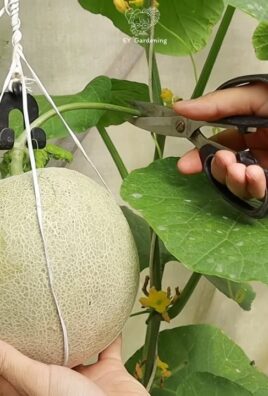Growing parsley indoors – doesn’t that sound fantastic? Imagine always having fresh, aromatic parsley on hand, whether it’s snowing outside or the sun is shining! No more wilted herbs from the supermarket that lose their scent after just one day. In this article, I’ll show you how to create your own little parsley oasis in your apartment with simple tricks and DIY ideas.
For centuries, parsley has been valued not only as a culinary herb but also as a medicinal plant. In ancient Rome, it was a symbol of joy and used at festivals. In the Middle Ages, people even believed in its magical powers! Today, we know that parsley is rich in vitamins and minerals – a real health booster. But why buy it when you can easily grow it yourself?
Many people are hesitant to grow herbs indoors because they think it’s complicated or time-consuming. But that’s not true! With the right tips and tricks, growing parsley indoors is child’s play. I’ll show you how to find the perfect location, what soil you need, and how to properly care for your parsley so that it grows lushly and brings you joy for a long time. I’ll also share a few clever DIY ideas to make your herb corner even more beautiful. So, let’s get started and turn your apartment into a green paradise!

Growing Parsley Indoors: Here’s How You Can Do It!
Hey everyone! I love fresh herbs, especially parsley. And what’s better than having it right at your fingertips in the kitchen? That’s why today I’m showing you how you can easily grow parsley indoors. Don’t worry, it’s really a piece of cake!
What You Need: The Materials List
Before we get started, here’s a list of everything you’ll need:
- Parsley seeds: Preferably organic quality, so you can be sure there are no harmful substances. You can buy them at a garden center, hardware store, or online.
- Seed starting mix: Special seed starting mix is loose and low in nutrients, ideal for seed germination. Regular potting soil is often too rich.
- Pots or planters: Choose pots with drainage holes so excess water can run off. The size should be at least 15 cm in diameter. Planters are great if you want to grow a larger amount of parsley at once.
- Saucers: To prevent water from running onto your windowsill or table.
- Spray bottle: For moistening the soil.
- Watering can: For gentle watering when the plants are larger.
- Bright windowsill or plant lamp: Parsley needs a lot of light!
- Optional: Small shovel or spoon for filling the pots.
Step-by-Step Guide: How to Grow Your Own Parsley
Alright, let’s get down to it! Just follow these steps, and soon you’ll be able to harvest your own fresh parsley.
1. Prepare the pots:
- Fill the pots or planters with seed starting mix. Leave about 2-3 cm of space to the rim.
- Press the soil down lightly, but not too firmly. It should remain loose.
- Moisten the soil with the spray bottle. It should be damp, but not wet.
2. Sow the seeds:
- Parsley seeds are so-called dark germinators. This means they germinate best when covered with soil.
- Distribute the seeds evenly on the soil. Make sure they are not too close together, otherwise the small plants won’t have enough space later.
- Cover the seeds with a thin layer of seed starting mix (approx. 0.5 cm).
- Moisten the soil again carefully with the spray bottle.
3. Provide the right environment:
- Place the pots in a bright spot, e.g., on a windowsill with plenty of sunlight.
- If you don’t have a bright windowsill, you can use a plant lamp.
- The ideal temperature for germination is between 18 and 22 degrees Celsius.
4. Patience is required:
- Parsley is a bit stubborn and takes a little longer to germinate. It can take 2-4 weeks for the first seedlings to sprout.
- Keep the soil moist but not wet during this time. Spray it regularly with the spray bottle.
- Avoid waterlogging, as the seeds can rot.
5. Pricking out (optional, but recommended):
- When the seedlings are about 2-3 cm tall and have their first true leaves (besides the seed leaves), you can prick them out. This means you separate them so they have more space to grow.
- Carefully take a seedling out of the pot and place it in its own pot or at a greater distance from the other seedlings in the planter.
- Be careful not to damage the roots.
- Use regular potting soil for this.
6. Care of young plants:
- Water the parsley regularly, but not too much. The soil should always be slightly moist.
- Fertilize the plants every 2-3 weeks with an organic liquid fertilizer for herbs.
- Regularly remove yellow or dried leaves.
- Rotate the pots regularly so the plants grow evenly and don’t bend towards the light.
Harvest Time: Finally, Fresh Parsley!
Hooray, the time has come! When the parsley is large enough (approx. 15-20 cm), you can harvest it.
- Cut the stems with scissors or a knife.
- It’s best to cut them just above the ground so the plant can grow back.
- Harvest regularly to make the plant bushier.
Extra Tips for a Bountiful Harvest
Here are a few more tips to help your parsley thrive:
- Choose a variety: There are different types of parsley, e.g., flat-leaf and curly parsley. Choose the variety you like best.
- Harvest regularly: Regular harvesting encourages the plant to produce new leaves.
- Keep an eye on pests: Regularly check the plants for pests like aphids or spider mites. If infested, you can use natural remedies like nettle tea or soapy water.
- Overwintering: Parsley is biennial. This means it flowers in its second year and produces seeds. After that, it dies. If you want to overwinter it, you should place it in a cool, bright place and water it less.
Common Problems and Solutions
Sometimes things don’t go smoothly. Here are a few common problems and how you can solve them:
- Seeds don’t germinate:
- Cause: Too dry, too cold, too old.
- Solution: Keep soil moist, increase temperature, use fresh seeds.
- Plants turn yellow:
- Cause: Too much water, too little light, nutrient deficiency.
- Solution: Water less, provide more light, fertilize.
- Pests:
- Cause: Dry air, weakened plants.
- Solution: Increase humidity, strengthen plants, use natural pesticides.
I hope this guide helps you grow your own parsley indoors. It’s a really great feeling to use fresh herbs from your own cultivation. Happy gardening!

Conclusion
If you love fresh parsley and are tired of constantly buying wilted herbs at the supermarket, then growing parsley indoors is an absolute must. Not only is it easier than you might think, but it also allows you to have access to this versatile and aromatic herb all year round. Imagine being able to add a handful of freshly chopped parsley to your favorite dishes at any time, without having to go shopping for it. The taste is incomparable, and the joy of having grown something yourself is priceless.
Growing parsley indoors is not only practical but also a wonderful way to bring some green into your home. A small pot of parsley on the windowsill can instantly brighten up a kitchen and create a calming, natural atmosphere. And the best part is that you have control over the growing conditions, which means you can ensure your parsley is free of harmful pesticides and chemicals.
There are countless ways to personalize your indoor parsley cultivation. Experiment with different varieties, from curly parsley to flat-leaf Italian parsley, to find out which one you like best. You can also use different pots and containers to reflect your personal style. Why not use an old teapot or a vintage mug as a planter? The possibilities are endless!
For an even bigger harvest, you can also invest in a small LED plant lamp, especially if your windowsill doesn’t get enough sunlight. This can be particularly beneficial in the winter months when the days are shorter. Another option is to use hydroponics, where parsley is grown in water instead of soil. This can be a clean and efficient method for growing parsley indoors.
We strongly encourage you to try this DIY trick and grow your own parsley indoors. It’s a rewarding project that not only provides you with fresh herbs but also beautifies your home and gives you a sense of accomplishment. Share your experiences with us! We would love to hear about your successes and challenges. Post photos of your parsley plants in the comments or share your tips and tricks with the community. Together, we can build a thriving community of indoor gardeners. So, what are you waiting for? Get your seeds today and start growing your own fresh parsley indoors!
FAQ – Frequently Asked Questions about Growing Parsley Indoors
Which parsley variety is best for growing indoors?
Both curly and flat-leaf parsley (Italian parsley) can be grown indoors. Flat-leaf parsley often has a more intense flavor and is preferred by many chefs. Curly parsley is more decorative and works well as a garnish. Ultimately, the choice depends on your personal preferences. Both varieties thrive well in pots and under the right conditions.
How much sunlight does parsley need when grown indoors?
Parsley needs at least 6 hours of sunlight per day. A south-facing window is ideal as it receives the most sunlight. If you don’t have enough natural light, you can use an LED plant lamp to promote growth. Place the lamp about 15-30 cm above the plant.
What kind of soil should I use for growing parsley indoors?
Use a high-quality, well-draining potting mix. Avoid garden soil, as it can be too heavy and suffocate the roots. A mixture of potting soil, perlite, and vermiculite ensures good drainage and aeration.
How often should I water my parsley?
Water your parsley when the top layer of soil feels dry. Make sure the water can drain well to avoid waterlogging. Waterlogging can lead to root rot. In general, it’s better to water less frequently but thoroughly, rather than frequently and superficially.
How do I fertilize my parsley?
Parsley needs regular fertilization to grow well. Use a balanced liquid fertilizer (e.g., 20-20-20) every two to four weeks. Dilute the fertilizer according to the instructions on the package. Avoid over-fertilizing, as this can burn the leaves.
How do I harvest parsley without damaging the plant?
Cut the outer stems of the parsley near the base. Avoid harvesting the entire plant at once, as this can hinder its growth. Regular harvesting encourages the plant to produce new leaves.
Can I grow parsley from seed indoors?
Yes, you can grow parsley from seed indoors. Soak the seeds in water for 24 hours before sowing to speed up germination. Sow the seeds about 0.5 cm deep in the soil and keep the soil moist. Germination can take up to three weeks. Once the seedlings are large enough, you can transplant them into larger pots.
Why is my parsley turning yellow?
Yellow leaves can have several causes, including overwatering, underwatering, nutrient deficiency, or too little light. Check the soil moisture, fertilize the plant, and make sure it gets enough light.
How can I keep pests away from my parsley?
Parsley can be infested by aphids, spider mites, or whiteflies. Check the plant regularly for pests. If infested, you can wipe the leaves with a damp cloth or use an insecticide based on neem oil.
How long can I grow parsley indoors?
With proper care, parsley can be grown indoors for several months or even years. Parsley is a biennial plant, which means it flowers and produces seeds in its second year. After flowering, the plant may lose its flavor and die. However, you can continue to harvest seeds and grow new plants.




Leave a Comment